Recently updated on March 3rd, 2025 at 04:57 pm
Sprawling more than 2 million acres across Wyoming, Idaho and Montana, Yellowstone was the world’s first national park when it was established in 1872. Today, some 4 million people travel to this UNESCO-listed area every year, drawn by simmering hot springs, bubbling mud pots and spouting geysers – in fact, you’ll find more than 60% of the world’s geysers here. But what makes this natural wonderland more incredible is its diversity. There are hundreds of things to see in Yellowstone National Park. Be amazed by ribbon-like rivers and thundering waterfalls, alpine forests, vast lakes and rusty-coloured canyons.
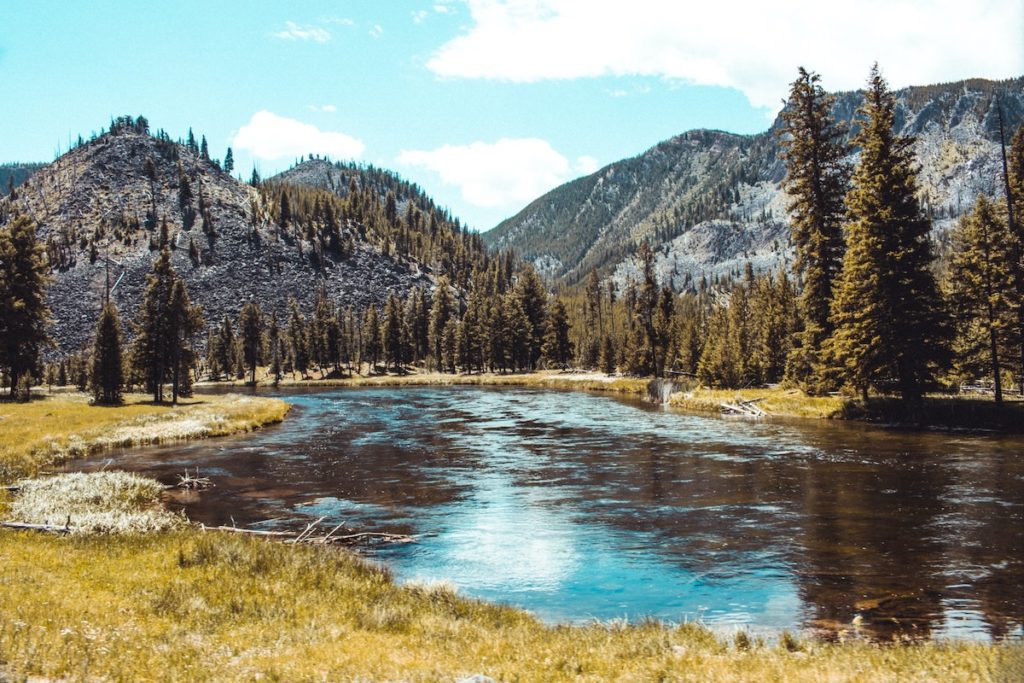

If you only have a day to visit, the Grand Loop scenic road connects many of Yellowstone’s best attractions and takes between four and seven hours to drive. Download the NPS Yellowstone App for a self-guided audio tour and interactive map.
But if you have a little more time and are wondering what to see in Yellowstone National Park, we’ve listed some of its most iconic landmarks, from the shooting waters of Old Faithful, past the rainbow-coloured Grand Prismatic Spring to the wildlife-rich Lamar Valley. So lace up your walking boots, fill your reusable water bottle and set your sat nav towards the best things to do in Yellowstone. You’ll want your camera for these too.
GET INSPIRED BY: National Parks Wonders
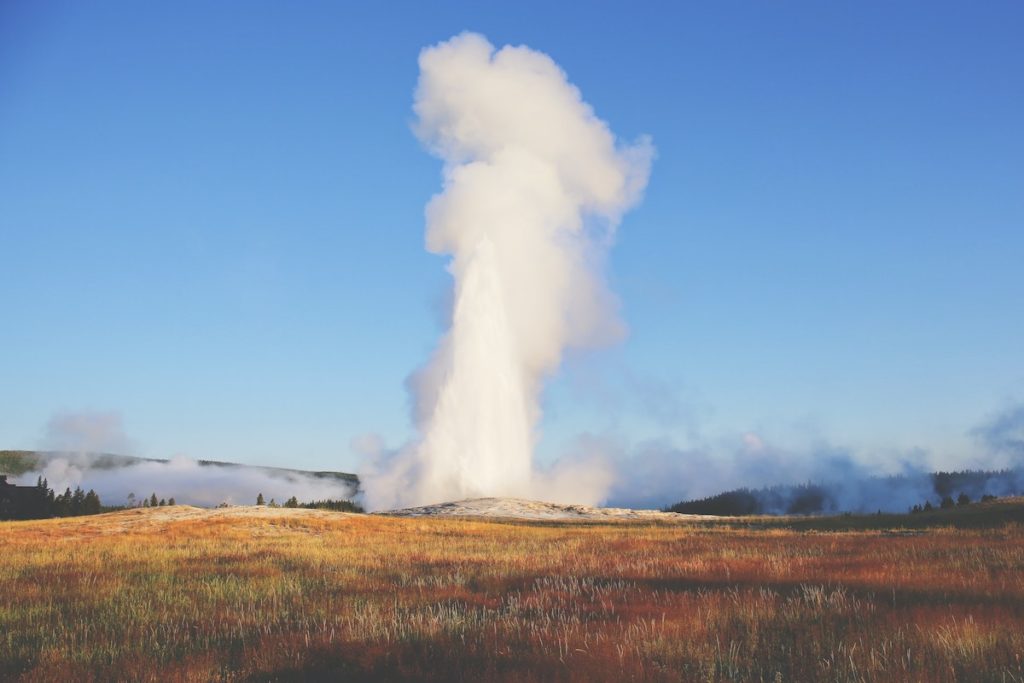

Old Faithful Geyser
This is one of those places you have to see if you go to Yellowstone. As its name suggests, Old Faithful isn’t just the park’s most famous of the 500 geysers, but it’s the most predictable too – it erupts almost every hour and a half. You might need to be a little patient (this is a natural phenomenon after all) but watching its waters arc more than 100ft into the air is well worth any wait. Look for predicted eruption times at the Old Faithful Visitor centre, and make sure you’re ready with the camera.
While you’re there, stop by the Old Faithful Inn too. Built at the turn of the 20th century, this legendary National Historic Landmark is believed to be one of the world’s largest log structures.
RELATED CONTENT: US National Parks Destination Guide
Upper Geyser Basin
Is Old Faithful a little too crowded for your liking? It’s part of the Upper Geyser Basin, home to more than a quarter of the world’s geysers. A trail loops 4.5 miles around the area, but if you’re short on time, we recommend making a beeline to Castle Geyser or the Morning Glory Pool, named after the pretty flower.
If you like this, make plans to visit the Norris Geyser Basin for blushing-pink springs, pine forests and the Steamboat Geyser, the world’s tallest active geyser which can shoot up to 300ft.
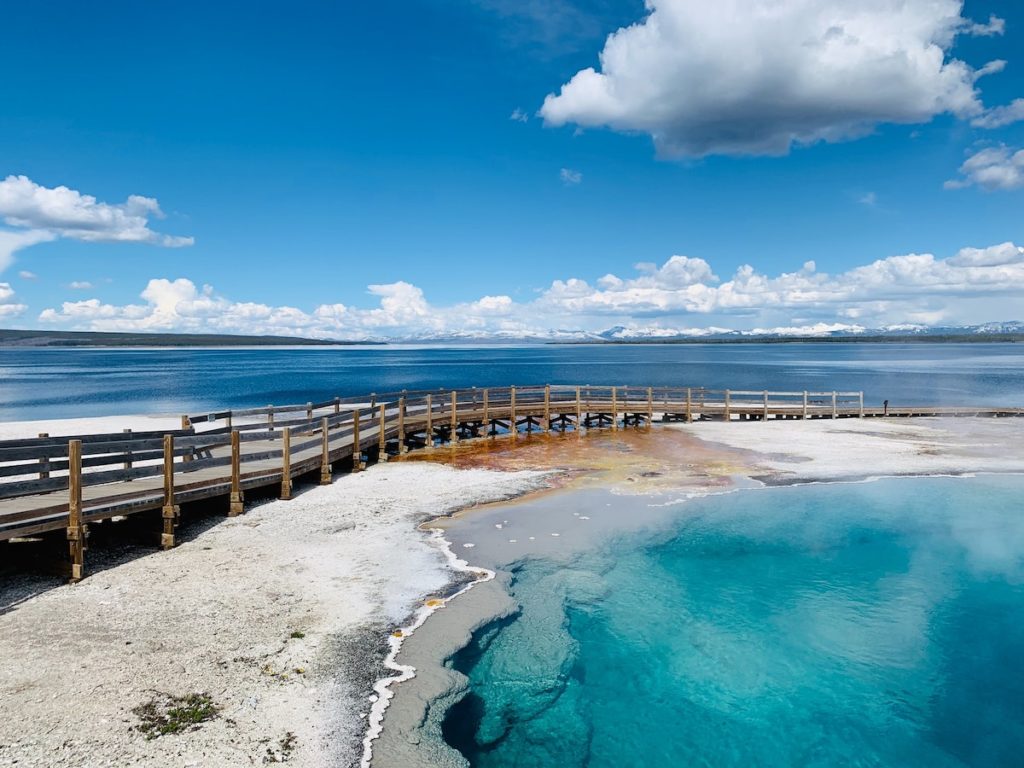

Yellowstone Lake
This is the largest, high-elevation lake in the US, meaning it’s a cool customer. Yellowstone Lake freezes over almost completely each winter, and even in summer it’s too chilly for swimming. Follow the hiking trail along the shore to Storm Point or, for a more immersive experience, explore by boat – boat rental, scenic boat tours, fishing and kayaking are available on site. Spare half hour? Stop by the West Thumb Geyser Basin on the lake’s western edge to peer into the Abyss – Yellowstone’s deepest hydrothermal pool.
GET INSPIRED BY: Scenic Parks Explorer
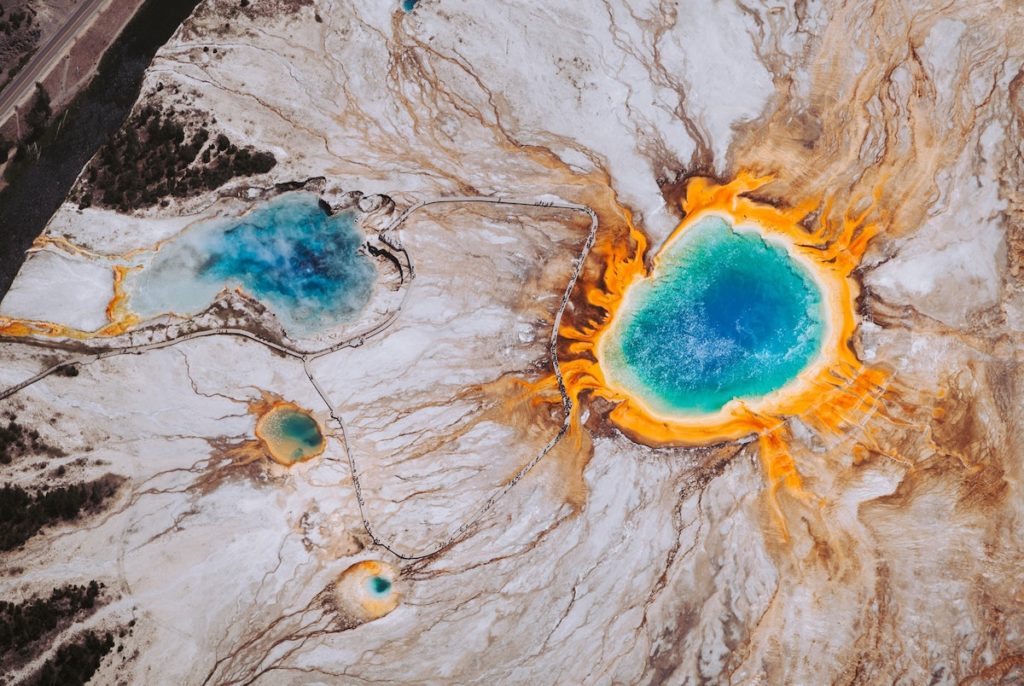

Grand Prismatic Spring
Another absolute must-see at Yellowstone, this is the largest hot spring in the US. But it’s the rainbow colours that really draw people here, a natural phenomenon caused by pigmented bacteria that thrive on the minerals in the water. The spectacle looks at its very best from above, so we recommend driving south to the Fairy Falls trail and walking for an hour to the Grand Prismatic Viewing Platform.
It’s one of the most popular sights in the park, so don’t be surprised if it gets busy. If you’re keen to avoid the crowds, plan your trip early in the morning or late evening, but bear in mind that the multicolours of the spring are at their best when it’s bright and sunny. When it’s cooler, steam can make it more tricky to see.
RELATED CONTENT: What to pack for a trip through America’s great national parks
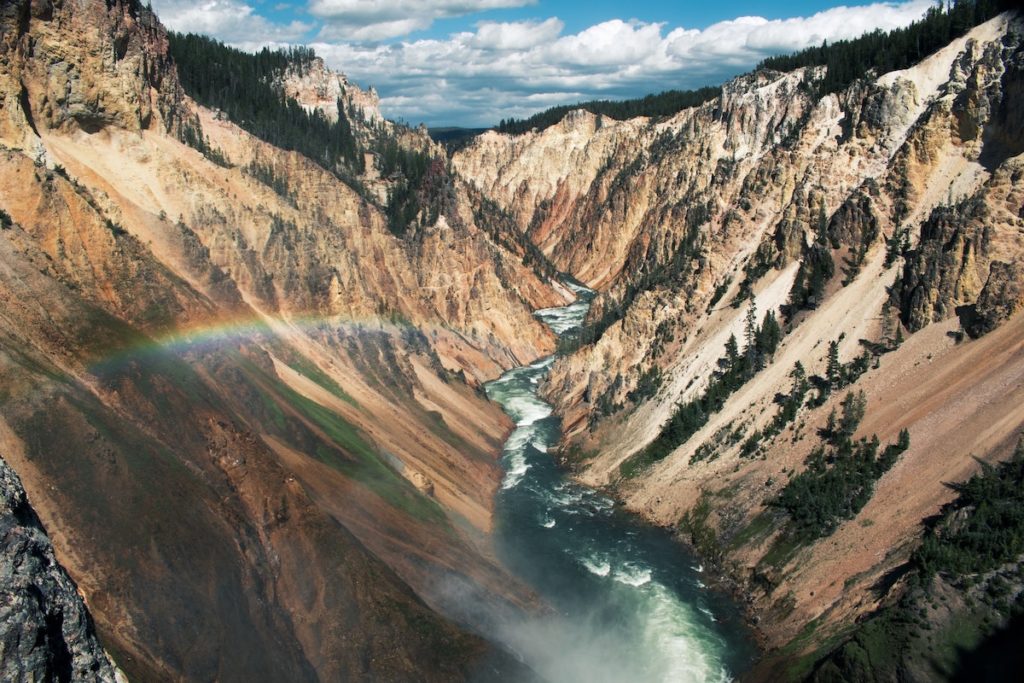

Grand Canyon of the Yellowstone
Downstream from Yellowstone Falls, this is the first large canyon on the 600-mile-long Yellowstone River, formed by thousands of years of erosion by the elements. Many visitors make a beeline for lookouts such as Red Rock Point and Artist Point, which has incredible views of the Lower Falls. But you could easily spend a day here, following walking trails that join the dots between viewpoints on the rim. We recommend taking the Point Sublime Trail or the shorter Uncle Tom’s Trail – just note, this latter route has more than 300 stairs.
GET INSPIRED BY: Wild West Cowboys and Buffalos – End Rapid City
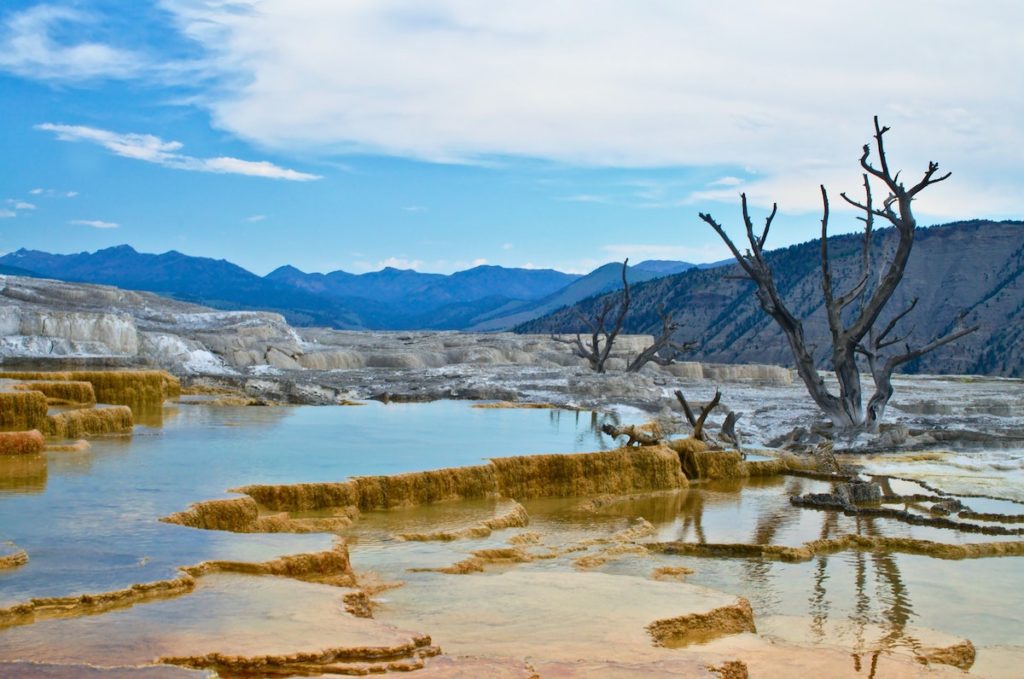

Mammoth Hot Springs
There’s no place quite like Mammoth Hot Springs, where the thermal wonders are far different to those you’ll find in other geyser basins. It’s possible to drive between the upper and lower terraces – formed by centuries’ worth of calcium carbonate being deposited by the thermal waters – but we recommend hiking along the boardwalks to really make the most of the sights. Don’t miss the multicoloured Minerva Terrace, Palette Spring or Liberty Cap. And do keep an eye out for grazing elk as you explore.
From here, it’s a short drive south to the Boiling River, where a large hot spring makes what is best described as natural hot tubs. They’re open for bathing in autumn and winter – temperatures are dangerously hot in spring and summer.
Tower Fall
Plunging 132ft, this dramatic waterfall is one of Yellowstone’s most popular sights, and it’s not hard to see why. Follow the hiking trail that begins just behind the Tower Fall General Store for a spectacular viewpoint – and if you’re up for it, another walkway winds down to the river for a different perspective.
GET INSPIRED BY: Five Epic National Parks


Lamar Valley
Wildlife watching is one of the big attractions of Yellowstone National Park, and the Lamar Valley is where you’ll see some of its most spectacular creatures – so much so that the area is often referred to as ‘America’s Serengeti’. Keep your eye out for bison, elk, wolves and coyotes roaming across awe-inspiring landscapes. Look to the sky for bald eagles and osprey. Visiting early morning or late afternoon is your best chance for a sighting. It’s well worth the drive north – just don’t be surprised if you have to stop the car to let animals cross.
RELATED CONTENT: 17 national parks you can take virtual tours to
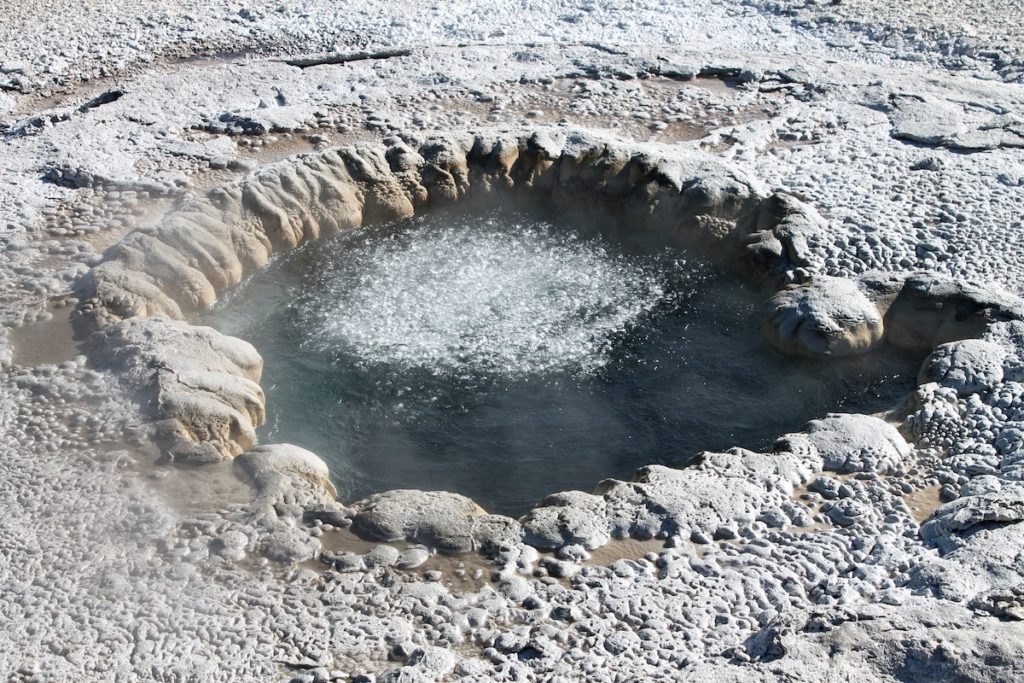

Mud Volcano
Don’t be surprised if you smell this natural phenomenon before you see it. The hissing, simmering pots of the Mud Volcano area give off sulfur. This noxious acid is what eats away at the surrounding landscape and carves such an intriguing landscape. Just make sure that you stay on the boardwalk as you explore.
Have you been to Yellowstone National Park? Tell us about the best thing you saw in the comments.